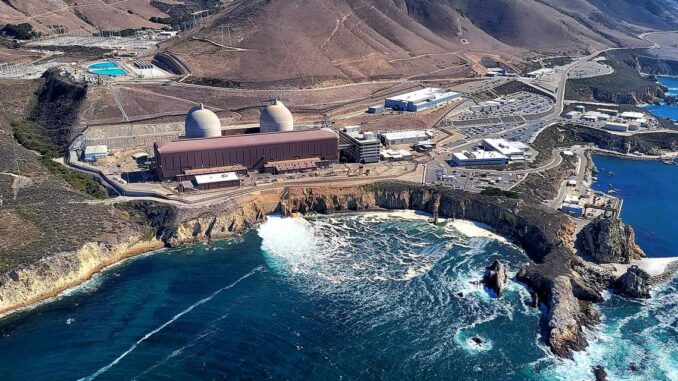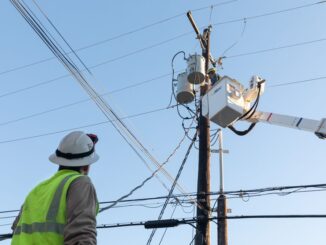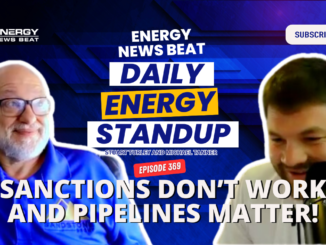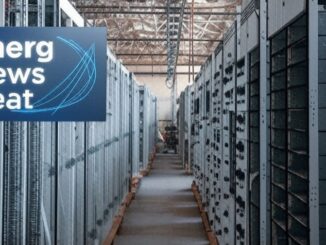
However, as grid reliability teeters on the edge amid explosive demand growth and massive retirements of existing capacity, questions loom: Can this revival scale up fast enough to avert a crisis, or will supply chain bottlenecks and competition from natural gas render it too little, too late?
The Dawn of a Nuclear Revival
This move is designed to accelerate approvals, reducing the NRC’s role to a mere formality and opening the door for small modular reactors (SMRs) and advanced designs. Key developments underscore this momentum. Dow Chemical has ordered four 80 MW SMRs from X-Energy for its Seadrift, Texas plant, while Fermi America proposes a massive 6,000 MW “hypergrid” in Amarillo, Texas, featuring four Westinghouse AP1000 reactors—aiming for the first unit online by 2032.
The military emerges as a major buyer, eyeing compact SMRs like Westinghouse’s eVinci (5-10 MW) for remote operations.
Globally, uranium miners’ stocks have surged on these signals, with a target to quadruple US nuclear capacity to 400 GWe by 2050.
Investor interest is palpable. Companies like Constellation Energy, the nation’s largest nuclear operator, are securing deals to power AI data centers, while Vistra Corp. recently re-licensed its Perry nuclear plant to ensure emission-free baseload supply.
The administration’s push also includes reviving the domestic nuclear supply chain, identifying recyclable uranium and plutonium inventories, and prioritizing fuel production.
These steps address long-standing vulnerabilities, such as reliance on Russian uranium, which has been disrupted by geopolitical tensions.
Yet, this revival builds on a fragile foundation. Only one SMR design—NuScale’s, upsized from 50 MW to 77 MW—has full NRC approval, and historical projects like the Washington Public Power Supply System highlight financing pitfalls.
While rising power prices from electrification (e.g., EVs, heat pumps) and data centers could make nuclear viable, the order pipeline remains a “trickle” compared to needs.
Grid Reliability: A Ticking Time Bomb
Meanwhile, 104 GW of capacity—mostly coal—is slated for retirement by 2030, with only 22 GW of new firm baseload (natural gas and nuclear) planned from 209 GW total additions.
The alarms are stark: Outage risks could multiply 100-fold, leading to over 800 annual blackout hours versus single digits today.
Regions like PJM and ERCOT need 10.5 GW each of “perfect capacity” by 2030 to avoid shortfalls, while outdated planning fails to account for interregional dependencies and extreme weather.
The North American Electric Reliability Corporation (NERC) echoes this, warning of 83 GW in fossil and nuclear retirements through 2033, exacerbating blackout risks.
Natural gas plays a pivotal role here, with projections for 120 GW in gross additions between 2025 and 2040 to meet peak demand and balance renewables.
Renewables and battery storage will dominate 93% of 2025 additions, but their intermittency heightens reliance on dispatchable sources like gas and nuclear.
The DOE urges retaining baseload assets and modernizing grids, but infrastructure misalignment—aging transmission lines and permitting delays—threatens to undermine growth.
Uranium shortages are acute: The US faces a “dangerous gap” in enriched uranium, paralyzed by tariff uncertainties and geopolitical shifts away from Russian supplies.
Top producers warn of critical shortages amid rising demand.
Equipment and turbines pose another challenge. Nuclear and natural gas both require specialized turbines—steam for nuclear, combustion for gas—but shared manufacturing capacity could spark competition. As gas installations ramp up to fill baseload gaps, demand for turbines and components may strain suppliers, delaying nuclear builds.
SMR deployment, while promising, demands a robust Midwest supply chain that’s still nascent.
Executive orders aim to jump-start domestic production, but rebuilding takes time, and global dynamics (e.g., Western utilities seeking non-Russian alternatives) intensify pressure.
Investor Opportunities in a Strained LandscapeDespite risks, the crisis breeds opportunity. Firms in firm power—Peabody Energy (coal), Constellation and Vistra (nuclear), NextEra (renewables with gas), and GE Vernova (turbines)—stand to gain from policy favoring reliability.
The DOE’s authority to delay retirements could prop up existing assets, while nuclear’s role in data centers offers premium pricing.
Conclusion: Too Late or Just in Time?
Supply shortages for uranium, turbines, and equipment, compounded by natural gas’s rapid GW buildup, could delay deployment until after crises hit. Policymakers must act swiftly—streamlining supply chains and integrating nuclear faster—or risk blackouts derailing economic growth. For investors, the strained landscape is fertile ground, but timing is everything. Will nuclear rise in time, or will it be a revival remembered for what could have been?





